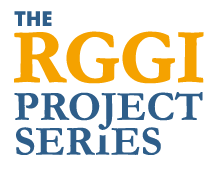RGGI is the nation’s first multi-state market-based program to reduce carbon pollution from power plants. CO2 emissions have declined over 50% since 2005, due in part to RGGI and other factors. At the same time, RGGI has generated net positive economic impacts for the participating states on the order of $4 billion dollars, and over 44,000 new job years while electricity demand declined and the region’s economy grew.
RGGI’s positive impacts are due in part to RGGI’s pioneering design. Building on the federal EPA’s cap & trade auction program to cut acid rain emissions in the 1990s, the RGGI states initially set a regional cap that declined gradually over a ten-year period. However, instead of giving away carbon emissions allowances freely to regulated power plant owners, the RGGI states decided to sell allowances at quarterly public auctions run by the states. RGGI’s approach created a public, transparent and accountable trading market for carbon allowances. RGGI put a price on carbon, and made reducing emissions economically valuable.
An important feature of RGGI is the preservation of states’ choice when it comes to the investment of auction revenue. RGGI auctions provide a steady stream of revenues for public use that each state can spend according to their own priorities. Most states re-invest RGGI revenues in energy efficiency programs, as well as renewable energy development, job training, and other consumer benefit programs that cut energy demand and energy bills. Some RGGI-funded efforts, especially energy efficiency, are counting three to four dollars’ worth of benefits for every dollar invested.
How RGGI Works
RGGI is governed by a Model Rule - a set of proposed regulations that form the basis for each RGGI state's carbon budget trading program. Each participating state voluntarily commits to adopt laws and regulations for their own carbon trading program substantially consistent with the Model Rule, and to work together to implement their programs and reduce carbon emissions in the region.
The Model Rule sets an annual cap for the region’s aggregate CO2 emissions from the electric power sector, which declines each year. Pollution permits (called “allowances”) are regularly auctioned and available for purchase by covered entities (power plants) and other qualified participants. One allowance works like an authorization to emit one ton of CO2.
Allowance auctions are administered quarterly by RGGI, Inc., a nonprofit established to run the program. At the auctions, participants submit confidential bids, which then inform the price of allowances for that auction. Controls are put in place to ensure the auctions run effectively, and participants are also permitted to trade or purchase allowances in a secondary market. An independent Market Monitor oversees the auctions and secondary market to ensure competitive performance and efficiency of the RGGI allowance market.
The RGGI program is set up in three-year compliance periods. At the end of each period, covered entities must submit one allowance for each ton of CO2 generated during the three-year period. These covered sources must participate in RGGI’s carbon emissions and allowance tracking (COATS) system, which enables independent tracking of emissions and allowance transactions for regulated power plants and the RGGI market. Participants may bank allowances for future use and may meet up to 3.3% of their compliance obligation through the use of offset allowances.
States have discretion on how to allocate allowances and use auction proceeds. Since RGGI started, the states have allocated 90% of allowances to auction, with the remaining 10% allocated to set-asides and other state-specific programs. Proceeds generated from each auction are disbursed to states in accordance with RGGI’s state budget allocation. While proceeds may be used to fund a wide variety of state policy objectives, the states historically have spent most of their proceeds on energy efficiency and other consumer benefit programs related to the energy sector. RGGI Inc. issues regular reports tracking the states’ investment of RGGI proceeds and the benefits of these investments throughout the region.
The RGGI Model Rule has been revised twice as part of regular Program Reviews, an extensive regional stakeholder process that engages the regulated community, environmental nonprofits and other organizations with technical expertise in the design of carbon trading programs. Model Rule updates in 2013 and 2017 resulted in the tightening of the regional cap and other design improvements. The current 2017 Model Rule reduces the cap by an additional 30% from 2020 to 2030; the 2030 cap will be more than 65% lower than the original nine-state 2009 cap.
For more details on RGGI program design, how RGGI works and how the states use auction proceeds, see the official RGGI Inc. website.
Expert Voices
Dallas Burtraw, Resources for the Future
Kelly Speakes-Backman, Alliance to Save Energy
Paul J. Hibbard, Principal, Analysis Group
From the MJ Bradley Electricity Market Trends (2016) and RGGI Auction (2017) videos & reports, supported by the RGGI Project Series





